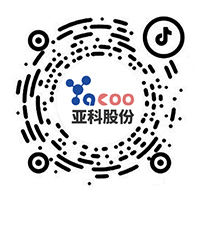Search Product
Structure Search
Search
Advantage Products
Location: Industrial Info
Donghua University research team successfully developed "living" self-healing materials
2019-04-28
来源:转载自第三方
The team of Donghua University's key national laboratory for fiber materials modification, You Zhengwei, developed a “living” self-healing material. After the damage, the new material can heal itself like human skin, and restore its original structure and function, which can greatly extend the service life of the material, improve the safety of the material, and reduce the maintenance cost of the material.
Self-healing materials were first used in spacecraft and were mainly used to delay the life of spacecraft. Since then, healing materials have gradually attracted attention in many fields such as automotive coatings, wearable electronics, software robots, and biomedicine. However, self-healing materials have been reported to require external stimuli (such as heat, laser, pressure, etc.) to stimulate the healing process, while mechanical and self-healing properties are difficult to balance. The development of the ideal high-strength and tough room-temperature self-healing materials is still the challenge of the field.
Therefore, the researchers innovated a molecular strategy that can simultaneously improve the self-healing properties and mechanical properties of the material—the copper-based dimethyl ketone-based elastomer (Cu-DOU-CPU). A dynamic covalent bond (a urethane bond) and a dynamic non-covalent bond (metal coordination bond and hydrogen bond) are present in the elastomer (Cu-DOU-CPU) based on copper coordination dimethyl ketone urethane. The coordination of copper ions is the key: the dynamic cross-linking produced by coordination significantly enhances the mechanical properties of the material; at the same time, the coordination of copper ions enhances the dynamics of the urethane bond, and the material exhibits better self-healing performance.
It is reported that the team of Professor Bao Xiaoguang of Suzhou University explained the molecular mechanism through density functional theory calculation. The synergy of the three dynamic keys gives the material a range of excellent properties. The strength and toughness of the elastomer based on copper-coordinated dimethylglyoxime (Cu-DOU-CPU) reached 14.8 MPa (MPa) and 87.0 MJ m−3, respectively. At the same time, the copper-based dimethylglyoxime-based elastomer (Cu-DOU-CPU) can self-heal at room temperature, and the self-healing strength can reach 1.84 MPa (MPa) and continue to increase to 13.8 MPa ( Megapascal), exceeding the original strength of all similar materials.
The paper's co-first author, Donghua University doctoral student Zhang Luzhi introduced the use of the material composite liquid metal to construct a high tensile self-healing wire. The cut wire can be basically healed at room temperature for 9 minutes, and the circuit can still be kept under the condition of stretching 2.5 times, showing the good application of the self-healing material in the field of stretchable electrons prospect.
Liu Zenghe, the first author of the paper and a doctoral student at Donghua University, said that it is worth mentioning that the raw materials used in the synthesis of Cu-DOU-CPU based on copper coordination dimethyl ketone urethane are easy to obtain. The reaction adopts the "one-pot method", which is simple and easy to use, and is very beneficial for large-scale use.
You Zhengwei said that the strategy proposed by the work to improve the mechanics and self-healing properties by using metal coordination can be extended to other metal ions and dynamic bond systems, providing a new idea for the development of high-performance self-healing materials.
Edited by Suzhou Yacoo Science Co., Ltd.
如果涉及转载授权,请联系我们。












